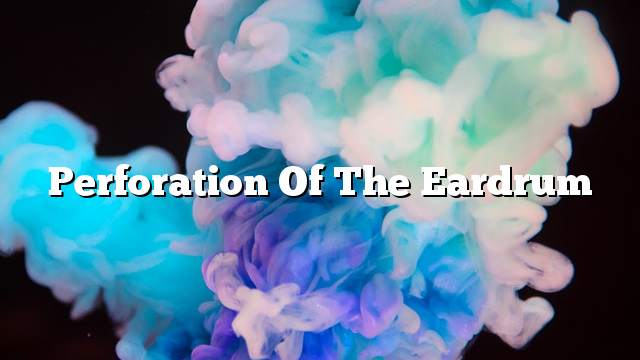Tissue membrane
Tissue is an oval thin layer of deep tissue found in the ear canal, known as the drum. It is important to protect the middle ear from bacteria, foreign bodies, water, etc., which protects them from infection, in addition to its role as a sensory, The eardrum may be exposed to many problems, such as embolism, or puncture, which affects its function. In this article, we will inform you about the causes of the eardrum and its treatment.
Perforation of the eardrum
Causes of perforation of the eardrum
- Osteoarthritis due to bacterial, viral, fungal, and other infections.
- Change atmospheric pressure dramatically, such as air travel.
- Severe injury to the ear area, or falling on it.
- Hear some powerful sounds, like the sound of firecrackers, or explosions, and others.
- Enter some alien objects, such as pins, chopsticks, and others.
- Exposure to a strong injury in the head area, such as fracture of the skull, affecting the structure of the middle ear and the interior.
Symptoms of piercing the eardrum
- Some swollen, bloody fluid from the ear.
- Partial loss of hearing, or loss of hearing.
- Tinnitus in the ear.
- Feeling dizzy.
- The thinest face.
- Vomiting, and nausea.
Treatment of eardrum hole
Usually the ear hole automatically heals within a few weeks or a month, taking into account the following:
- Maintain dry ear and prevent exposure to water by placing cotton stoppers with Vaseline during bathing to prevent water from entering.
- Open mouth when sneezing.
- Use some types of painkillers, antibiotics.
- Ear cover, protected from cold air.
- If surgery does not improve, the surgeon pierces the pierced part by sewing it or by placing it with a small amount of special chemical on its edges and then placing a special adhesive on it.
- Closure of the nose during flight, swallowing or blowing while keeping the mouth closed, or chewing gum when the plane ascends and falls.
- Avoid cleaning the ear.
- Wear protective earplugs in the workplace, or places with high noise.
- Avoid condensation.
- Treatment of otitis media to reduce hearing impairment, nasal congestion, fever, and ear pain.
- Avoid rubbing the ear.
- Make children aware of the importance of not inserting foreign objects into the ear, to prevent damage to the drum.
